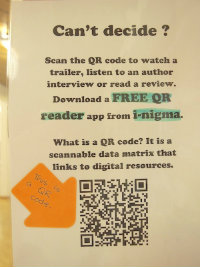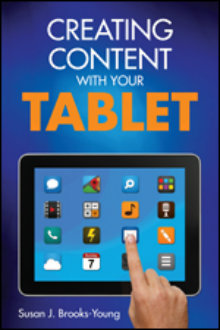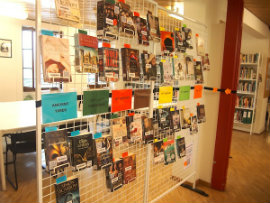How to Engage Students in Creating Content with Tablets
Creating Content with Your Tablet
By Susan J. Brooks-Young
(Corwin, 2014 – Learn more)
Reviewed by Jennifer Underwood
Clear. Concise. Focused. Honest. Practical. Inspiring. These are just a few of the adjectives that leap to mind to describe Susan Brooks-Young’s latest book, Creating Content with Your Tablet. This slim volume is just the ticket for any teacher who wants to integrate technology meaningfully, no matter the grade level or type of tablet being used.
And meaningfully is really the key word. Brooks-Young stresses throughout the book that the goal is not technology integration but student learning. As she puts it, “When the primary focus of an activity becomes clever ways to incorporate a new technology rather than learning, educators are allowing themselves to be sidetracked.” (p. 78)
Focus on content creation
The book’s premise is that one of the best uses of technology in schools is the creation of content by students (although the author also gives examples of when teacher-created content might be appropriate as well). Creation is at the top of Bloom’s revised taxonomy and using technology to get to that peak opens up new possibilities, from photos and videos to e-books and more.
Brooks-Young’s book focuses on the big picture and her ideas will undoubtedly spark the imagination of teachers who delve into it. It is not a step by step, how-to manual, but thanks to her well-selected short list of resources at the end of each chapter, teachers will easily find more detailed information when they need it.
More about the book
Readers of this book will have the advantage of Brooks-Young’s years of experience and knowledge distilled to its essence. First, she points out that it is not necessary for each student to have a device. Tablets lend themselves well to collaborative small group work. Of course, like all small group activities, planning is important and expectations need to be established.
In the opening chapter, the author provides teachers with strategies and tools to evaluate apps, while the last chapter explains how to incorporate them successfully in the classrooms. The first chapter includes links to several rubrics for evaluating apps to ensure that they are tied to the standards and curriculum being taught. The final chapter explains how to plan a lesson using a tablet – in a way that is clear and easy to follow.

Brooks-Young
The book’s other six chapters each focus on a different type of content that teachers and students can create: photos, videos, audio (to develop speaking and listening skills), publishing, and QR codes. Within each of these brief chapters the author provides a range of activity suggestions. For example, in the chapter on photography, one of her suggestions is to have students create five-photo stories using Flickr.
One of the things that I liked about this book is the author’s honesty. First, Brooks-Young offers no illusions that integrating technology to create content is easy. “Planning apptivities that incorporate more sophisticated levels of use and higher order thinking skills takes time and a great deal of thought.”
Similarly, she points out shortcomings and pitfalls where they exist. For example, she warns that QR codes can easily be used for the glitz factor rather than for supporting learning. In the chapter on publishing, she notes that for this purpose tablets are most effective when used in conjunction with laptop or desktop computers (primarily for ease of word processing).
Applying what I learned

I did this and placed the codes directly on the books where students and teachers can scan them from our display using tablet or smartphone cameras (see photos). In the future, I would love to have the opportunity to use the QR codes to share student-created book reviews or trailers.
This little book punches well above its weight. Whether you are new to tablets or a veteran user, Creating Content with Your Tablet offers valuable insights that will propel you and your students to the creation of some amazing content. You won’t be disappointed.
Jennifer Underwood, an elementary school teacher and former diplomat, taught fourth grade in an international school in Seoul, South Korea. She recently moved to Geneva, Switzerland where she is working as a high school library assistant. She has had the good fortune to attend a technology workshop with the author.
One of Jennifer’s favorite projects was collaborating with other teachers and students to integrate research skills, social studies and technology to provide additional information to museum visitors using QR codes. The result can be found here.






































Thanks, Jennifer! I remember working with you. Your new position sounds wonderful. Let me know if you do have students create trailers.